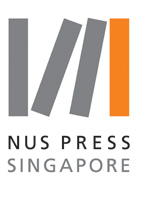9789813252561
9789813252578
Distributed for National University of Singapore Press
Fighting for Health
Medicine in Cold War Southeast Asia
An overlooked history of Southeast Asia’s varied healthcare regimes during the Cold War.
For far too long, Southeast Asia has been treated as a static backdrop for the exploits and discoveries of Western biomedical doctors. Yet, Southeast Asians have been vital to the significant developments in the prevention and treatment of diseases that have taken place in the region and beyond. Many of the institutions and people that shaped subsequent responses to outbreaks, epidemics, and pandemics first began their work in Southeast Asia during the Cold War. The diversity of approaches to health and medicine during that era also reminds us of the possibilities, and limits, of human intervention in the face of political, social, economic, and microbial realities. The people and places of Southeast Asia have provided clinical trials for different health regimes. Fighting for Health highlights new perspectives and methods that have evolved from research presented at regional conferences, including the History of Medicine in Southeast Asia (HOMSEA) series. These insights serve to challenge dominant models of the medical humanities.
For far too long, Southeast Asia has been treated as a static backdrop for the exploits and discoveries of Western biomedical doctors. Yet, Southeast Asians have been vital to the significant developments in the prevention and treatment of diseases that have taken place in the region and beyond. Many of the institutions and people that shaped subsequent responses to outbreaks, epidemics, and pandemics first began their work in Southeast Asia during the Cold War. The diversity of approaches to health and medicine during that era also reminds us of the possibilities, and limits, of human intervention in the face of political, social, economic, and microbial realities. The people and places of Southeast Asia have provided clinical trials for different health regimes. Fighting for Health highlights new perspectives and methods that have evolved from research presented at regional conferences, including the History of Medicine in Southeast Asia (HOMSEA) series. These insights serve to challenge dominant models of the medical humanities.
328 pages | 12 halftones, 2 maps, 4 tables | 5.98 x 9.02 | © 2024
History of Medicine in Southeast Asia
Asian Studies: Southeast Asia and Australia
History: Asian History
Reviews
Table of Contents
List of Tables
List of Illustrations
Acknowledgements
Introduction
Chapter 1: Health, Agriculture and Animism in the ‘Development’ of Portuguese Timor, 1945- 1975
Chapter 2: Tool of Domination and Act of Benevolence: Medicine and Healthcare during the Malayan Emergency, 1948-1960
Chapter 3: Health Sector Contestation in Cold War Laos, 1950-1975
Chapter 4: More Eastern than Traditional: The Making of Ðông y in the Republic of Vietnam during the Cold War
Chapter 5: Building a “socialist health system”: Soviet assistance in malaria control in the Democratic Republic of Vietnam during the Cold War
Chapter 6: Mobilising Applied Medical Knowledge for Indonesia: Soekarnoist Science and Asian-African Solidarity, 1950s
Chapter 7: The Cholera Pandemic, Chinese Diaspora, and the Cold War Politics in Southeast Asia and China during the 1960s
Chapter 8: Managing Wartime Conditions: South Korean Developmental Ambitions, Public Health, and Emerging Forms of Overseas Medical Outreach, 1964-1973
Glossary
Bibliography
Contributors
Index
List of Illustrations
Acknowledgements
Introduction
Chapter 1: Health, Agriculture and Animism in the ‘Development’ of Portuguese Timor, 1945- 1975
Chapter 2: Tool of Domination and Act of Benevolence: Medicine and Healthcare during the Malayan Emergency, 1948-1960
Chapter 3: Health Sector Contestation in Cold War Laos, 1950-1975
Chapter 4: More Eastern than Traditional: The Making of Ðông y in the Republic of Vietnam during the Cold War
Chapter 5: Building a “socialist health system”: Soviet assistance in malaria control in the Democratic Republic of Vietnam during the Cold War
Chapter 6: Mobilising Applied Medical Knowledge for Indonesia: Soekarnoist Science and Asian-African Solidarity, 1950s
Chapter 7: The Cholera Pandemic, Chinese Diaspora, and the Cold War Politics in Southeast Asia and China during the 1960s
Chapter 8: Managing Wartime Conditions: South Korean Developmental Ambitions, Public Health, and Emerging Forms of Overseas Medical Outreach, 1964-1973
Glossary
Bibliography
Contributors
Index

